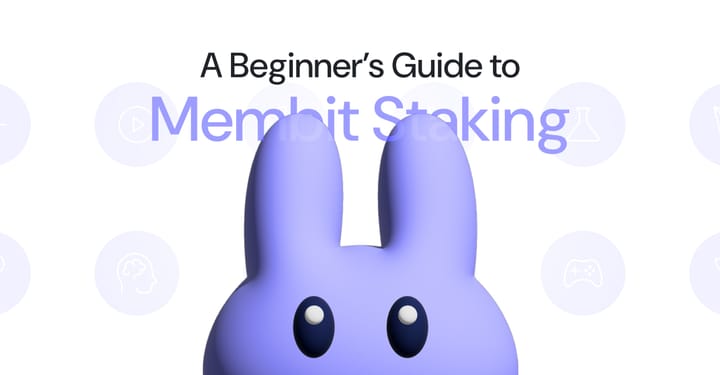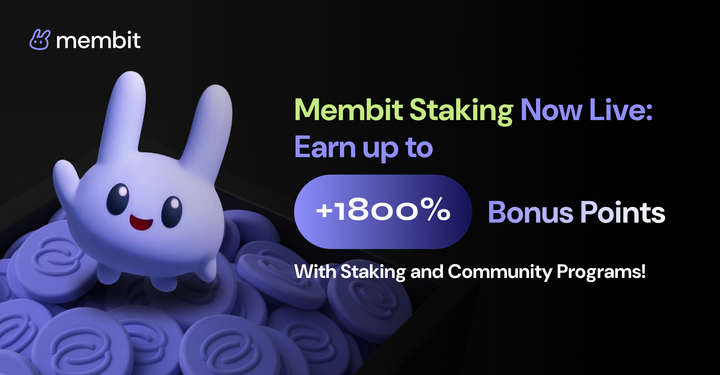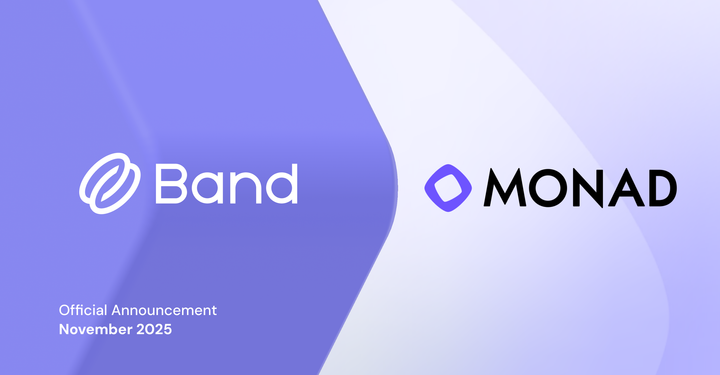Beta Finance’s Omni X Band Integration AMA Recap
Last month, Band Protocol hosted a fascinating AMA session with Beta Finance, known for its Omni platform, a revolutionary approach to decentralized lending.
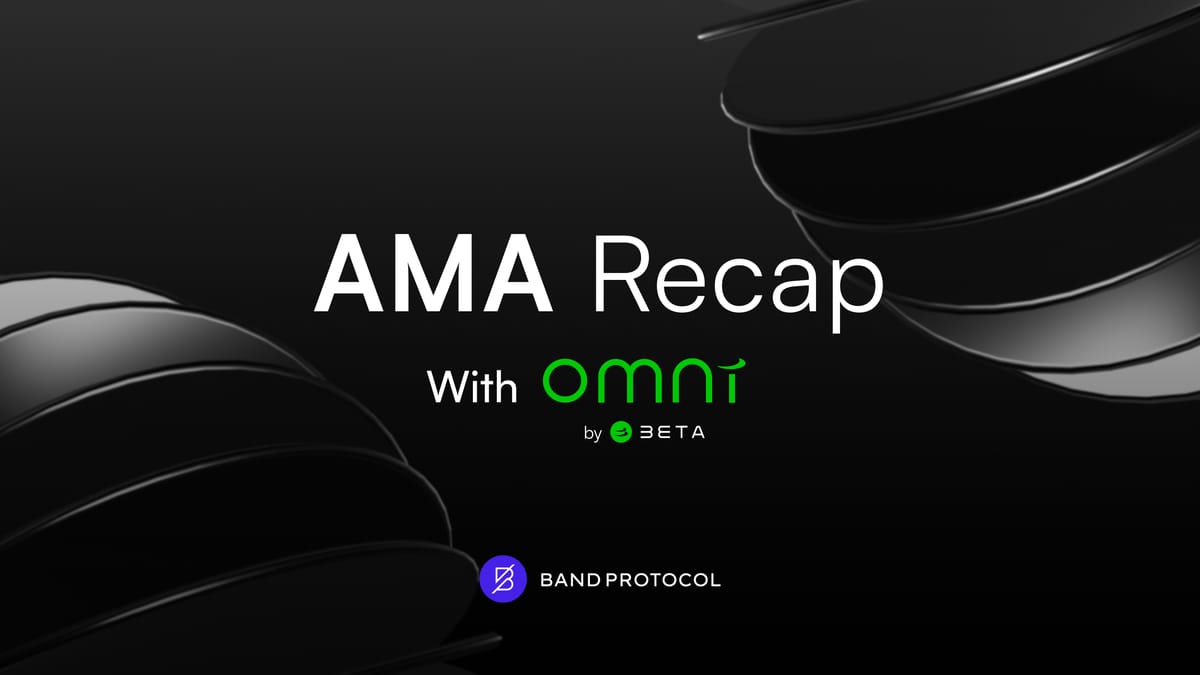
Last month, Band Protocol hosted a fascinating AMA session with Beta Finance, known for its Omni platform, a revolutionary approach to decentralized lending. The session featured insightful discussions led by 0xctf, the Lead Core Contributor at Beta Finance, and was hosted by Leon from Band Protocol. Here’s a recap of the key takeaways from this engaging AMA.
Q1. For new people joining who might not be aware of what Omni is; could you give our listeners a more in-depth explanation of what you’re trying to solve with Omni, and what the vision here?
0xctf: The first one was how is Omni different from what is out there right now. To start with that one, we created Omni because we saw that right now money markets are heavily favored towards borrowers and what this means is that borrowers can say what tokens they can use as collateral, how much money they are going to borrow out at any time or whether or not they will repay at any time. Whereas lenders are suffering, they aren’t able to choose who they lend to for instance, they just deposit into a pool.
Also if there are outstanding borrowers and there isn’t enough liquidity to withdraw, lenders are kinda stuck. Overall this is a money market that isn’t fair to both lenders and borrowers right now, it’s more fair to borrowers. So we asked ourselves what can we do to make lending more powerful for the depositors. One of the ideas we came up with; was if lenders could opt in and out of specific assets that they were willing to lend to. For example; I’m a lender on Aave and I only want to lend the stablecoins, ETH, and Uni tokens. I don’t want CRV tokens to be used as collateral because I see that as high risk. So we wanted to enable this behavior without money markets themselves. So that’s what we built with Omni and we accomplished this as well.
Q2. would you mind giving me an example of how the protocol works? While doing some research for the AMA I noticed a slick UI design for Omni, how is the overall user experience?
0xctf: Yeah, definitely. So, the protocol is an entirely new mechanism that we introduce a few new UI UX features compared to what people are most familiar with, but we understand that like DeFi is pretty complex. And so we want to keep it as familiar and simple as possible still. So at the core of what we do is we introduce a new concept called riskless, and this essentially allows you to do is opt-in and opt-out of supporting different collateral assets that you're lending to. So, you can imagine the advantage of this is like for lenders, they're able to explicitly say like how much risk they want to take on. And, then additionally, as like the protocol itself, this makes it a lot easier to list new collateral assets because any new collateral asset is siloed away from affecting the risk of other positions for other lenders on the protocol.
And, so, what we effectively do is to take the benefits of isolated pair model for money market lending while removing the cons of liquidity fragmentation or lack of capital efficiency. And, so, the main difference for users on the front end though, is that whenever you deposit, you just need to take one extra step, which is to select a risk pool that you're willing to lend to. Otherwise, withdrawing, borrowing, and repaying still follow the same UX flows that we're all familiar with. And, we also have tried to like improve the UX experience by integrating the ability to wrap and unwrap directly in our products.
Q3. Leon: With Band being the core oracle solution for Omni, keen to tell everyone tuning in how Omni uses Band oracles and how the overall implementation process went between both parties.
0xctf: Yeah for sure. We think working with Band has been a really smooth process. For getting oracle support on mainnet and soon-to-be BNB-chain. As a lending protocol we take oracle security very serious of course. We look at how secure the oracle is, how robust the oracle is and a lot of thought goes into how exactly we’re able to ensure that users aren’t affected by any external factor so that oracles will consistently give the right information and users get the correct and fair experience. When building Omni one of the things is that we need a faster support for oracle price feeds, as we are trying to support more tokens on our platform. Normally when working with other oracle providers the lead time to get a new feed up takes maybe 2-3 months which is really long for our product. We’ve found that Band has clear requirements for what’s needed to support a new price feed and reasonable costs. We had to meet a deadline to launch the protocol on Mainnet. The Band team has exceeded our expectations in getting oracle support ready and functioning.
Q4. Leon: Another neat feature I came across are risk pools, mind explaining those more in depth for people not aware of what those are?
0xctf: You can think of it being able to choose who you want to lend your tokens to. For example, as a lender, I might not want to lend to risky assets $SHIB or $PEPE, but still want to lend to safer assets like $ETH. Or, another person may want to lend to $SHIB and also $ETH at the same time. Under the hood, we’re able to aggregate all these choices lenders make together so that there’s max capital efficiency and zero liquidity fragmentation.
As an example, let’s say, Alice lends USDC and allows $ETH as collateral while Bob also lends USDC and allows both $ETH and $BETA as collateral. On protocols, like Silo or Rari, Alice and Bob would have to split their deposits making them available to only $ETH or $BETA. However, on Omni, this isn’t necessary. Borrowers using $ETH are able to take money from both Alice and Bob, while borrowers using $BETA are only able to take money from Bob. Omni gives the benefits of risk compartmentalization without the cons!
Q5. Leon: How does Omni deal with liquidity fragmentation?
0xctf: Yeah, great question. So, things will get a little bit technical here. But, you can kind of imagine when you are a lender, you select different collateral assets that you want to agree to lend to. And, then, these assets are marked behind the scenes. Let's assign Leon's liquidity to this asset and to, like ETH and beta at the same time. And, then, let's assign another person, Alice's assets to just eat. And, so, when anyone comes to borrow, we first check what collateral that person is using, and, then, based on that collateral check, what liquidities are assigned to those tokens. So, there's some complex math going on here to solve this double accounting problem so that there are no bugs. But, for those that are more interested in how it works technically, feel free to read our code base. It's public. And we have also published our audit reports so that people can also dive into those to really feel safe and understand how the protocol works more.
Questions from the Community
Q1. How does Omni plan to address the issue of gas fees, and what measures are in place to ensure that trading fees on the Omni platform remain affordable and accessible to all its users?
0xctf: Yeah, that's also been on our mind these past few weeks. That's why we're launching on BNB chain, as well as another chain, which I will not name right now, but I think some people can guess which one it will be that will launch by the end of December, and the gas fees on there should be much, much less about, I believe it's 100 times to 200 times less in gas fees to interact with that protocol. And, one of the other things recently is that Blast is announcing that they'll be launching a mainnet in February, and, so, Omni will also be available there. And, hopefully, by moving to these L2s where fees are cheaper, users are able to take advantage of the cheaper fees, and not have to be stuck with only Ethereum.
Q2. How is Omni tackling the issue of user adoption, and what steps are being taken to promote greater awareness and understanding of the platform among potential users and traders?
0xctf: Yeah, that's a great question. So, we're really trying to spearhead our marketing and education efforts at beta. We've partnered with a few KOLs recently to launch YouTube videos that are informational content as well as generating strategies for how we can frame the product to get more adoption by showing interesting yield strategies that can be taken advantage of through Omni. And, then, we're also looking to start sponsoring some events such as Blockchain Week in Taipei to raise awareness about the product more.
Q3. What inspired the creation of OMNI finance, and what specific financial challenges or gaps in the market does it aim to address?
0xctf: We were inspired to make Omni because we thought that it was really hard for new products to list collateral assets on lending markets. If you think about the growth of DeFi, there's going to be more and more tokens and assets and real world assets that move on chain. And those are going to need a lending market, but it's not really feasible for these new assets or tokens to create their own lending markets for themselves.
The reason why people use Aave is not because their technology is innovative or necessarily better than the next money market itself. It's because it's been around for so long that it kind of has this trust or this perception of trust, which is that you'll never lose money if you deposit in this protocol. That's where we see our advantage is that we're able to exist for a long time, prove to everyone that we're super secure, that, if you deposit with us, you're guaranteed to never lose money, and then still be able to take on more risk and list more assets without having to spin up an entirely new protocol, like what AAVE would need to do. We wanted to build a money market that's able to be adaptive and resilient for the future, whereas, right now, we saw no protocol is able to accomplish this.
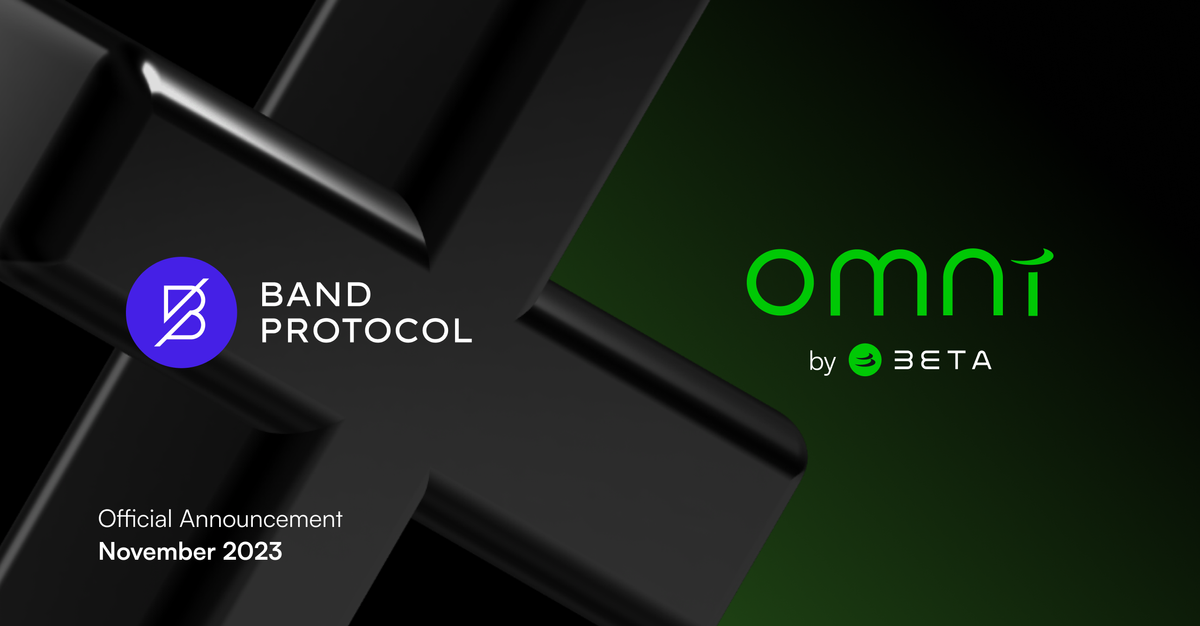
Omni by Beta Finance
Omni by Beta Finance redefines DeFi lending with its unique dual risk pool and risk grade model. This innovation realizes personalized lending, giving lenders and borrowers enhanced control and flexible options for their risk and reward preferences. For a deeper dive into Omni's key features, visit https://www.betafinance.org/.
About Band Protocol
Band Protocol is a cross-chain data oracle platform with the aspiration to build high-quality suites of web3 development products. The flagship oracle solution aggregates and connects real-world data and APIs to smart contracts, enabling smart contract applications such as DeFi, prediction markets, and games to be built on-chain without relying on the single point of failure of a centralized oracle.
More about Band Protocol: https://linktr.ee/bandprotocol


